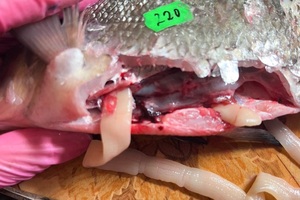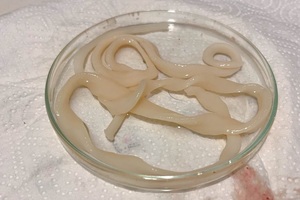The problem of ligula parasite infection in bream, Abramis brama, in Lake Syamozero, Prionezhsky District, Karelia, has been registered since the 1950s. According to the literature, the parasite abundance increases and decreases in different years. The last studies of the parasite fauna of Syamozero bream were conducted more than 15 years ago. Scientists are convinced that monitoring of ligulosis should be continued, as the lake is under constantly growing pressure: the ecosystem is being altered under the impact of trout farms, and the number of tourists coming to the lake shore for recreation is increasing.
— The increase in the infection of cyprinids with ligula concurs with the rise in the eutrophication of the water body - its enrichment in nutrients. This process is a consequence of both direct human impact and of climate change. Eutrophication goes along with an increase in plankton abundance. During these periods, fish begin to feed on copepods, which carry the eggs of the parasite. In the life cycle of ligula, fish is an intermediate host, where the parasite stays at the plerocercoid stage. If the definitive host (bird) eats the infected fish, the plerocercoid transforms into an adult worm in its intestine. The bird disposes of worm eggs into the water, where they are eaten by copepods, and then again the crustaceans are consumed by fish, — explained Darya Lebedeva, Research Leader, Senior Researcher at the Laboratory of Animal and Plant Parasitology, Institute of Biology KarRC RAS.
For both locals and tourists, bream is an object of industrial and sport fishing. Since cestode parasites inside the fish organism grow to a considerable size, they deteriorate the physical condition of the fish: metabolism changes, nutritional deficiency develops, and the fish become emaciated.
— The marketability of the fish is reduced, and so is probably its safety as food. It is believed that once the parasite is removed, the fish can be eaten. In our study, we plan to assess how the parasite influences the muscle composition of the fish, and to what extent it remains nutritious in terms of proteins, fats and other nutrients, — the parasitologist told.
Interactions between the parasitic cestode and its host will be studied at all levels: behavioral, physiological, and molecular. Ligula genus cestodes from Karelian waters will be genotyped for the first time, which is important for identifying their taxonomic status and origin. The species diversity and evolution of Ligula is a poorly researched issue in Russia. In addition, the risks of disease transfer between wild and aquacultured fish species will be assessed.
Through this effort, scientists will obtain updated information on the parasite fauna of Cyprinids in Lake Syamozero, in continuation of long-term monitoring.
The study was supported by RSF grant # 24-26-00251. The results of the project can be useful in biomonitoring techniques, veterinary pharmacology and food safety control.
Photo: Irina Sukhovskaya / Institute of Biology KarRC RAS
News
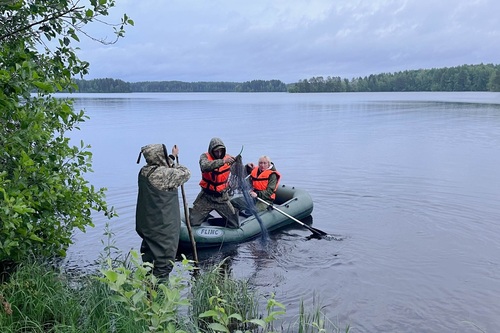
July 18, 2024
The spread of ligulosis in Lake Syamozero monitored by Karelian scientists
Researchers from the Institute of Biology KarRC RAS will evaluate the well-being of the natural bream population in Lake Syamozero, Pryazhinsky District of Karelia. Scientists have started working on a new study under the Russian Science Foundation grant. Material was collected on the lake to analyze the distribution of ligula, a parasite of cyprinid fishes. The species diversity and evolution of cestodes of the genus Ligula is a poorly studied issue in Russia. The interactions between the parasite and its host will be studied at all levels: behavioral, physiological and molecular.
Researchers from the Institute of Biology KarRC RAS will evaluate the well-being of the natural bream population in Lake Syamozero, Pryazhinsky District of Karelia. Scientists have started working on a new study under the Russian Science Foundation grant. Material was collected on the lake to analyze the distribution of ligula, a parasite of cyprinid fishes. The species diversity and evolution of cestodes of the genus Ligula is a poorly studied issue in Russia. The interactions between the parasite and its host will be studied at all levels: behavioral, physiological and molecular.
See also:
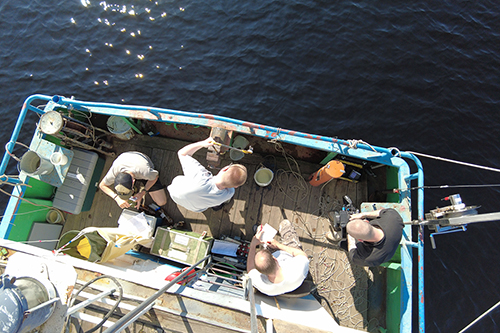
July 28, 2025
Researchers monitor the state of Lake Onego under climate change and human impact
Staff of the Northern Water Problems Institute KarRC RAS are back from an expedition that covered larger bays and deep-water regions of Lake Onego. The multidisciplinary studies both provide new data on the wellbeing of the lake ecosystem through modern analysis methods and permit tracing the changes relying on over 60-year-long own observation series. Annual monitoring is especially important for evaluating the combined effect of climate change and human impact on the lake.
Staff of the Northern Water Problems Institute KarRC RAS are back from an expedition that covered larger bays and deep-water regions of Lake Onego. The multidisciplinary studies both provide new data on the wellbeing of the lake ecosystem through modern analysis methods and permit tracing the changes relying on over 60-year-long own observation series. Annual monitoring is especially important for evaluating the combined effect of climate change and human impact on the lake.
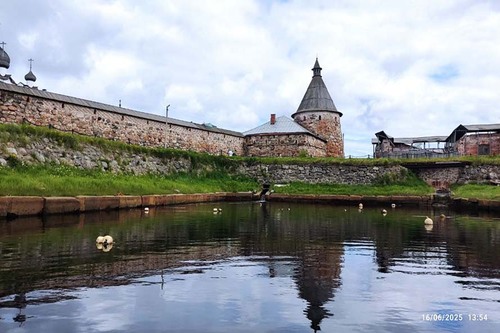
July 24, 2025
Karelian scientists assess the consequences of human impact on Solovki ecosystem
In 2025, KarRC RAS scientists continued field surveys in Blagopoluchiia Bay, Solovetsky Archipelago, White Sea. Two expeditions have already taken place – in winter and in summer, and one more is coming in August. Scientists explore the human impact on the archipelago’s nature, both in the bay waters and on adjacent land. They have detected an unusual ice structure, collected sediment cores to assess the pollution level, described the composition of the flora in the intertidal zone and the coastal meadows.
In 2025, KarRC RAS scientists continued field surveys in Blagopoluchiia Bay, Solovetsky Archipelago, White Sea. Two expeditions have already taken place – in winter and in summer, and one more is coming in August. Scientists explore the human impact on the archipelago’s nature, both in the bay waters and on adjacent land. They have detected an unusual ice structure, collected sediment cores to assess the pollution level, described the composition of the flora in the intertidal zone and the coastal meadows.




